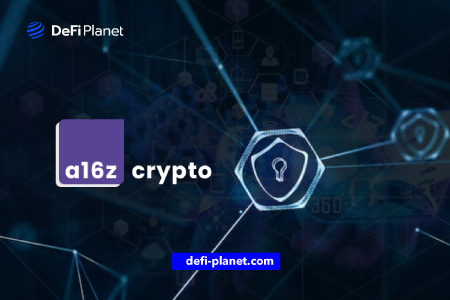Although the art industry was primarily responsible for some of the most expensive NFTs ever sold, the NFT market is still in its infancy, giving household entertainment powerhouses like Disney, Warner Bros., DC, and Marvel room to establish themselves in what many have started to refer to as the future of entertainment.
Production companies and entertainment studios have enthusiastically welcomed discourse about strategically integrating NFTs into their IP ecosystem using intellectual property valued at billions of dollars.
However, the ongoing debates about NFTs and their licensing may be even more significant.
Speaking of NFT licenses, this article explores the impact a16z NFT licenses have on the NFT industry.
An Overview of NFT-Specific Licenses
Many people buy NFTs hoping to own an avatar, a piece of art, or some other form of creative output, but they often have no idea what they will actually get.
Today, customers who purchase an NFT will receive a tokenID and metadata pointing to another content file (usually stored off-chain, although there are some fully on-chain artworks). This often leads to a misunderstanding of the rights of NFT buyers.
US copyright laws do not automatically grant the right to reproduce, alter, or even publicly display artwork that has been purchased (including traditional and digital works). Without a license or copyright transfer from the NFT creator, the buyer is not permitted to use copyright-related rights (such as reproduction, adaptation, or public display).
NFT creators can grant more rights to holders through licensing, although this has yet to happen across all projects. Many projects get off the ground without licenses or with special licenses, which raises more questions than they answer. It is common practice to store licenses (and other legal documentation of what buyers may lawfully do with their NFTs) off-chain, where they could be altered without holders’ knowledge.
These difficulties are worsened by the complexity of copyright transfers. Even the savviest buyer might require assistance in figuring out which rights, out of a possibly infinite number of rights, the previous owner may have already given away.
Standardized NFT-specific licensing should ideally be monitored and enforced on the blockchain to give customers more assurance. Increased availability of high-quality licenses, the resolution of ownership issues, and a reduction in the burden (and expense) on authors to develop their licensing policies are all possible benefits of improved licensing frameworks.
An Evaluation of a16z’s NFT License
The cryptocurrency division of Andreessen Horowitz, a16z, released 6 NFT-specific copyright license frameworks as part of a free and open set of “Can’t Be Evil” Licenses, similar to Creative Commons.
In a blog post, a16z’s Managing Partner, Chris Dixon, and General Counsel, Miles Jennings, stated that the company is taking steps to clear up the confusion and ambiguity surrounding NFT licensing.
a16z aims to define the rights of an NFT creator, buyer, or seller with regard to the creation of digital assets. This is to create free access to high-quality licensing and encourage the adoption of uniform standards across the Web3 sector.
As stated in its terms and conditions, the “Can’t Be Evil” set is intended to act as a model for NFT projects to consider when developing and offering NFTs.
According to the text, the open source licenses are based on US law and only apply to copyright, excluding other types of intellectual property like personality rights. US copyright laws do not automatically grant buyers of physical or digital assets the right to duplicate, modify, or make available the artwork for public exhibition without prior permission.
Each of the six options has varying degrees of freedom designed to help creators retain or relinquish their intellectual property rights, particularly those that permit people to alter the art or create new works based on it.
The creation of the licenses was a joint effort between a16z Crypto and the law firms DLA Piper LLP and Latham & Watkins LLP. Users can explicitly mention a specific license in a smart contract by using NFT projects, which can be found on GitHub.
NFT projects like Moonbirds, whose creators recently switched to a Creative Commons Zero (CC0) license and abruptly revoked its holders’ commercial art rights, have recently brought Creative Commons licenses to the public’s attention.
The terms and conditions of the Meebits and CryptoPunks have also been amended so that NFT holders can use their NFTs’ images in any way they like, without Yuga Labs’ permission, which legally retains ownership of the rights and title to the art.
NFTs are fundamentally just bits of computer code. It is quite typical for only the metadata to be saved on-chain, with the actual image or piece of art being stored off-chain on a different server.
When a buyer purchases an NFT and sends it to a crypto address, they only receive the metadata linked to the remote image; they do not receive the actual content file, which complicates the issue of intellectual property rights.
Features of a16z’s NFT License (And Its Impact on the NFT Industry)
It cannot be revoked by creators
The licenses make the rights they grant irrevocable (with some necessary exceptions) to prevent creators from deceiving buyers by switching out a license for a more restrictive one in the future. One of the options creators have is to say that the license must be revoked if the buyer violates the terms of the license or uses the NFT artwork to spread hate speech.
It tolerates adaptations and modifications
The licenses are open to modifications and adaptations to support the community-created changes that characterize NFT projects and deter conflicts within communities.
For example, suppose thousands of people buy a collection. Some may want to use their NFTs in similar ways, such as branded baseball caps, seltzer bottles, or any other type of business venture.
The licenses try to protect owners’ rights across an entire collection to change and adapt their NFTs for activities that make sense without causing conflict among community members.
It respects third-party content
If the parameters of the partnership aren’t made clear in advance, using another artist’s work to create a new piece of art can expose consumers to further legal issues. Creators can augment the “Can’t Be Evil” license with supplemental rules and conditions to lower consumer risks and make it easier for creators to work together.
The licenses also attempt to hold creators, not customers, accountable if their works improperly incorporate the work of others. Hence, when creators use the licenses, it implies that their NFTs do not contain misappropriated content.
Ownership of a license is made clear in the event of a loss
The licenses are intended to alleviate some of the ambiguity that occurs when stolen or lost NFTs end up in the wrong hands, particularly about the rights of the original holder if they no longer possess the stolen NFT. The “Can’t Be Evil” licenses try to make theft less of a problem for NFT holders by preventing licensed rights from being transferred to anyone who obtains their NFT illegally.
In Conclusion,
- The art sector has a long way to go as it explores the NFT space. It needs the right hands to help it navigate the NFT industry to build a lasting infrastructure that people will embrace while also benefiting creators and their communities.
- In the future, platforms may be able to recognize a project’s licensing permissions automatically. The sale of the new NFT could automatically result in royalties being paid to both the original artists and the current NFT holder when the authors of a new NFT project include art from existing projects. These benefits could lead to numerous licensed works that make the NFT ecosystem equitable, useful, and creative.
If you would like to read more articles like this, visit DeFi Planet and follow us on Twitter, LinkedIn, Facebook, and Instagram.
“Take control of your crypto portfolio with MARKETS PRO, DeFi Planet’s suite of analytics tools.”





















